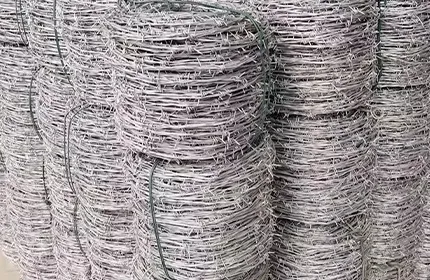-
 Phone:
Phone: -
 Email:
Email:

coated nichrome wire
Coated Nichrome Wire The Versatile Resistance Heating Element
Nichrome wire, an alloy made primarily of nickel and chromium, is widely known for its exceptional electrical resistance and ability to withstand high temperatures. As technology advances, various applications call for more specialized types of wire, leading to the development of coated nichrome wire. This variation combines the inherent strengths of nichrome with additional protective coatings, making it suitable for a range of industrial, commercial, and residential uses.
One primary advantage of coated nichrome wire is its enhanced durability. The coating typically consists of materials such as silicone, glass, or other heat-resistant substances that protect the wire from oxidation, corrosion, and physical wear. This protective layer significantly extends the life of the wire, making it an ideal choice in environments prone to thermal stress or chemical exposure. For applications like high-temperature furnaces, industrial heaters, and even cooking appliances, the longevity provided by coatings can translate to reduced maintenance costs and improved safety.
The versatility of coated nichrome wire can be seen in its various applications. It is commonly used in industrial heaters that require precise temperature control, as its resistance properties allow for efficient heat generation. Electric heating elements in ovens, toasters, and hairdryers utilize nichrome wire due to its ability to deliver uniform heat efficiently. In 3D printing, heated beds often use coated nichrome wire to ensure proper adhesion of the printed materials by maintaining a consistent temperature.
coated nichrome wire

In addition to industrial applications, coated nichrome wire has gained popularity in the realm of hobbies and DIY projects. Enthusiasts in model railroading, for instance, may use coated nichrome wire to create realistic heating effects for miniature environments or to simulate the heating of tracks in colder climates. Its malleability and availability in various gauges make it a favorite among crafters and builders alike.
Furthermore, coated nichrome wire plays a significant role in the field of scientific research. Its consistent heating capabilities have made it an essential component in laboratory setups where controlled heating is crucial for experimental procedures. Researchers are increasingly relying on this wire for applications such as thermocouples, temperature probes, and even in cryogenic applications where precise heating can affect experimental outcomes.
Despite its many advantages, working with coated nichrome wire requires knowledge and care. When selecting the appropriate wire and coating for a specific application, factors like the desired temperature range, environmental conditions, and physical stresses need to be considered. Additionally, while the coating provides protection, it cannot eliminate the risk of damage entirely, so users should handle the wire with care to avoid compromising its integrity.
In conclusion, coated nichrome wire stands out as a crucial material in today's technologically driven landscape. Its unique combination of resistance heating capability and enhanced durability through protective coatings allows it to meet the demands of various industries and applications. From residential heating elements to scientific research tools, this wire continues to prove its versatility and reliability. Whether for professional use or personal projects, coated nichrome wire remains an indispensable asset, exemplifying the innovative spirit that drives modern engineering and design.
-
Wire Mesh for Every Need: A Practical SolutionNewsJul.25,2025
-
Steel Fences: Durable, Secure, and Stylish OptionsNewsJul.25,2025
-
Roll Top Fencing: A Smart Solution for Safety and SecurityNewsJul.25,2025
-
Cattle Farm Fencing Solutions for Maximum SecurityNewsJul.25,2025
-
Affordable Iron Binding Wire SolutionsNewsJul.25,2025
-
Affordable Galvanized Wire SolutionsNewsJul.25,2025
-
Wire Hanger Recycling IdeasNewsJul.25,2025








